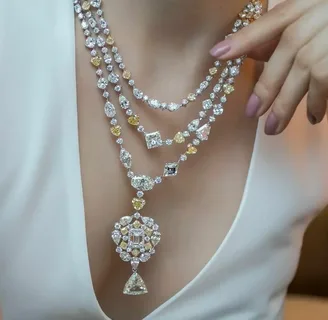Lab Made Diamonds vs Real Diamonds: A Thorough Correlation

In the realm of gemstones, diamonds hold a renowned spot because of their brightness, solidness, and immortal excellence. With the headway of innovation, lab made diamonds have arisen as an unmistakable option in contrast to regular diamonds. This article gives a top to bottom correlation between lab made diamonds vs real diamonds, zeroing in on their disparities, advantages, and contemplations to assist you with pursuing an educated choice.
Understanding Lab Made Diamonds
Lab made diamonds, otherwise called manufactured diamonds or lab grown diamonds, will be diamonds that are established in a controlled laboratory climate. These diamonds have similar physical and synthetic properties as regular diamonds however are created through human mediation. There are two essential strategies for making lab made diamonds: High Tension High Temperature (HPHT) and Substance Fume Statement (CVD).
High Tension High Temperature (HPHT)
The HPHT strategy copies the regular circumstances under which diamonds structure in the World’s mantle. In this cycle, carbon is exposed to very high temperatures and tensions, bringing about the development of diamonds. HPHT diamonds are known for their gem clearness and excellent hardness, making them basically vague from normal diamonds.
Compound Fume Testimony (CVD)
CVD includes the utilization of a carbon rich gas to store jewel layers on a substrate. This interaction is performed at lower tensions and temperatures contrasted with HPHT. CVD diamonds are portrayed by their consistency and can be created with less considerations contrasted with normal diamonds. The CVD technique additionally takes into account more prominent command over the jewel’s tone and clearness.
Looking at Regular Diamonds
Normal diamonds are shaped north of billions of years through regular topographical cycles. They are mined from the World’s outside layer and are known for their extraordinary incorporations and variety varieties. Lab grown diamonds are sorted in view of the Four Cs: Cut, Variety, Clearness, and Carat Weight.
Cut
The cut of a characteristic precious stone alludes to how well the jewel has been molded and cleaned. This angle influences the precious stone’s brightness and shimmer. The cut is perhaps of the most significant figure deciding a precious stone’s general quality and worth.
Variety
Regular diamonds arrive in a large number of varieties, from vapid to black out yellow or brown. The variety evaluating scale goes from D (dry) to Z (light yellow or brown). The more drab the jewel, the more significant it will in general be.
Lucidity
Lucidity alludes to the presence of inward or outside defects, known as incorporations and flaws. Regular diamonds with less considerations are viewed as more important. Lucidity is reviewed on a scale from Perfect (FL) to Included (I).
Carat Weight
Carat weight estimates the size of the precious stone. One carat is identical to 200 milligrams. Bigger diamonds are more uncommon and, in this way, more significant. Carat weight is a critical figure deciding a precious stone’s general cost.
Contrasting Lab Made Diamonds and Regular Diamonds
1. Beginning and Extraordinariness
The most eminent contrast between lab made and normal diamonds is their starting point. Lab made diamonds are made in weeks or months, while normal diamonds require billions of years to frame. Accordingly, normal diamonds are a lot more extraordinary and commonly more costly.
2. Cost
Lab made diamonds for the most part cost 20 40% not exactly their normal partners. This value distinction is credited to the decreased unique case and the proficiency of creation in a controlled climate. Customers can get bigger or greater diamonds at a lower price tag with lab made diamonds.
3. Ecological Effect
Regular jewel mining has huge natural ramifications, including living space obliteration, soil disintegration, and water contamination. Lab made diamonds offer a more manageable and eco well disposed other option, as they require less land and water and produce less contaminations.
4. Moral Contemplations
The precious stone industry has confronted examination over issues connected with struggle diamonds, otherwise called blood diamonds, which store savagery and denials of basic liberties. Lab made diamonds are many times considered a more moral decision, as they don’t add to these issues and accompany straightforward starting points.
5. Quality and Appearance
Both lab made and regular diamonds show similar physical and compound properties, making them practically vague to the unaided eye. The two of them have remarkable brightness, hardness, and clearness. Notwithstanding, lab made diamonds can be created with less considerations and a more steady tone.
Picking Between Lab Made and Regular Diamonds
While choosing a lab made jewel and a characteristic precious stone, think about the accompanying elements:
1. Spending plan
On the off chance that cost is a main consideration, lab made diamonds offer an alluring choice. You can frequently get a bigger or greater precious stone acceptable for you contrasted with a characteristic jewel.
2. Ecological and Moral Worries
In the event that you focus on ecological maintainability and moral obtaining, lab made diamonds are a convincing decision. They offer a method for partaking in the magnificence of diamonds without adding to biological harm or untrustworthy practices.
3. Individual Inclination
Finally, the decision and a characteristic precious stone boils down to individual inclination. A few people might incline toward the unique case and verifiable meaning of normal diamonds, while others might esteem the expense viability and moral benefits of lab made diamonds.
Conclusion
In synopsis, both lab made diamonds and normal diamonds offer special advantages and contemplations. Lab made diamonds give a more reasonable, economical, and moral option without settling for less on quality or appearance. Regular diamonds, then again, hold an immortal allure and worth because of their unique case and normal starting points. By understanding the distinctions and gauging the elements that make the biggest difference to you, you can go with an educated choice and select the ideal precious stone for your necessities.





